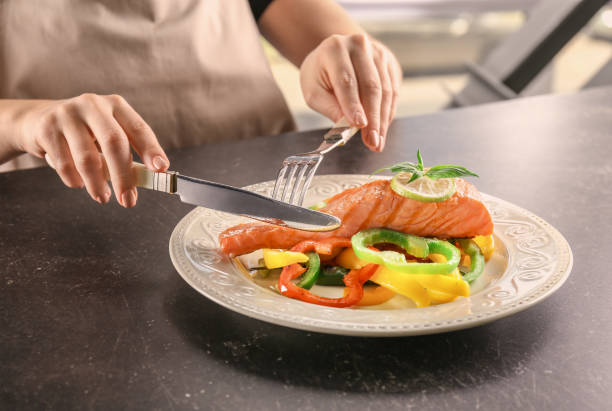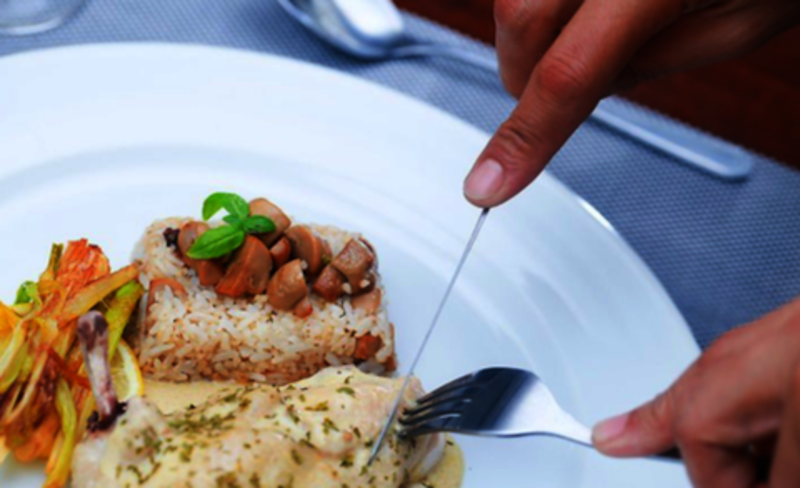In the world of culinary arts, mastering knife skills for eating meat politely is essential for any kitchen professional. Whether you're a chef, a culinary student, or a food enthusiast, understanding the nuances of using knives properly at the table can elevate your dining experience and leave a lasting impression.
Good knife skills are not just about the technical ability to carve and slice meat. They encompass a broader spectrum of dining etiquette, including how you present yourself at the table and interact with fellow diners. By mastering these skills, you can enhance the overall dining experience and demonstrate professionalism in any setting.

The Art of Knife Etiquette
Knife etiquette is an integral part of dining culture. It's not just about cutting meat effectively; it's about doing so with grace and finesse. The way you handle your knife and fork reveals a lot about your table manners and respect for the dining occasion.
The Basics of Knife and Fork Usage
When it comes to using a knife and fork, there are two primary styles: American and Continental. The American style involves switching the fork to the right hand after cutting, while the Continental style keeps the fork in the left hand throughout the meal. Understanding these knife styles can help you adapt to different dining situations with ease.
Polishing Your Knife Skills
For those in the culinary industry, having polished knife skills is non-negotiable. These skills not only ensure a pleasant dining experience but also reflect your professionalism and attention to detail.
Choosing the Right Knife
Choosing the right knife for the job is crucial. For meat, a sharp, well-balanced knife is essential. Ensure your knife is maintained and sharpened regularly to achieve clean cuts and prevent any mishaps during the meal.
Proper Cutting Techniques
When cutting meat, hold the knife firmly and use smooth, even strokes. Avoid sawing motions that can make the meat look unappetizing and disrupt the overall dining experience. Mastering these techniques can enhance your knife skills for eating meat politely and impress your peers.
Common Pitfalls and How to Avoid Them
Even experienced professionals can make mistakes when it comes to knife etiquette. Here are some common pitfalls and tips on how to avoid them:
Overhandling the Knife
One of the most common mistakes is overhandling the knife, which can be distracting to other diners. Keep your movements smooth and deliberate, ensuring you dont draw unnecessary attention to yourself.
Improper Knife Placement
Knowing where to place your knife when not in use is crucial. In most Western cultures, placing your knife and fork parallel on the plate signals that you have finished your meal. For more details on table etiquette, you can check out this cutlery guide.
Advanced Knife Skills for Professionals
For those looking to take their knife skills for eating meat politely to the next level, consider exploring advanced techniques. These include carving larger cuts of meat, understanding different meat textures, and mastering the art of presentation.
Carving Larger Cuts
Carving larger cuts of meat requires precision and skill. Ensure you have a stable cutting board and a sharp carving knife. Use long, smooth strokes to maintain the integrity of the meat and achieve thin, even slices.
Understanding Meat Textures
Each type of meat has its own texture and requires different handling techniques. For example, tougher cuts may require a different approach than more tender ones. Understanding these nuances can enhance your dining experience and show off your culinary expertise.
Conclusion
Mastering knife skills for eating meat politely is an essential skill for any kitchen professional. By understanding and implementing these techniques, you can enhance the dining experience for yourself and others, leaving a lasting impression of professionalism and finesse.
For more insights on proper dining etiquette, you might find this wiki page helpful.

FAQs
What is the difference between American and Continental knife styles?
In American style, you switch your fork to the right hand after cutting, while in Continental style, you keep the fork in the left hand throughout the meal.
Why is knife etiquette important?
Knife etiquette is important because it reflects your respect for the dining experience and the people you are dining with. It also enhances the overall dining experience.
How can I improve my knife skills?
Practice is key. Regularly sharpening your knife, choosing the right knife for the job, and understanding different cutting techniques can significantly improve your knife skills.
This article contains affiliate links. We may earn a commission at no extra cost to you.


























